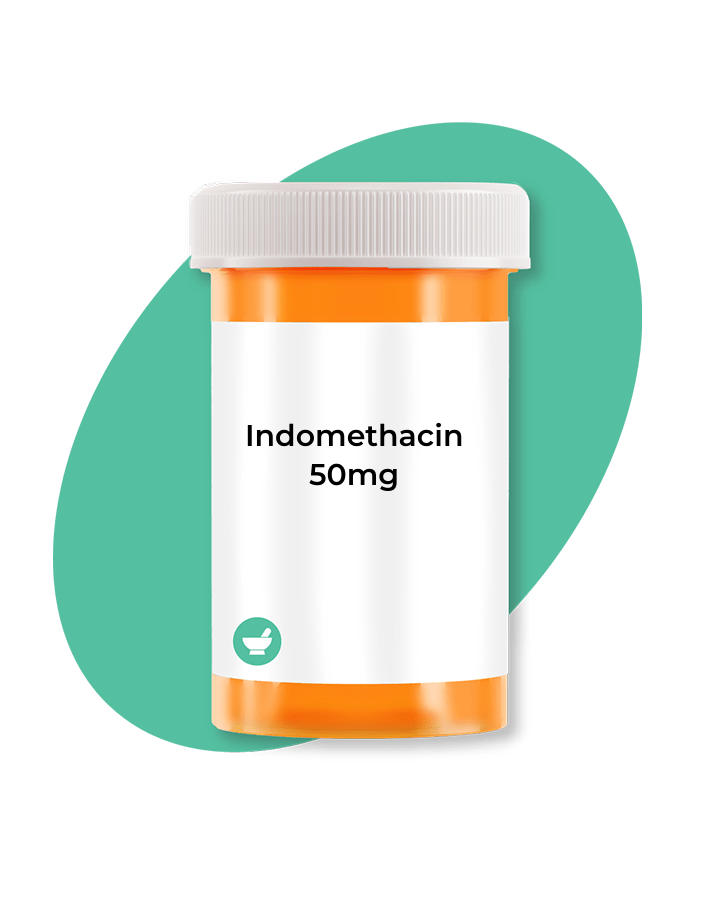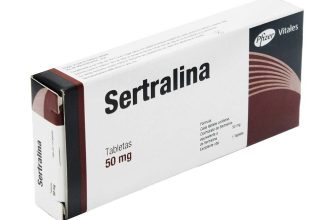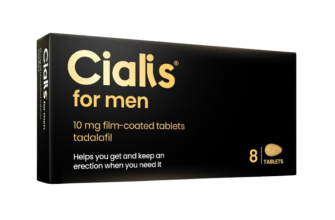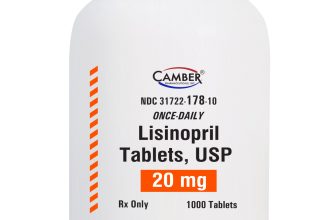Seeking Indocine without a prescription? Understand that obtaining prescription medication without a doctor’s authorization carries significant risks. Always prioritize your health and safety.
Consider exploring over-the-counter pain relievers like ibuprofen or naproxen for mild to moderate pain relief. These readily available options often provide sufficient symptom management. If your pain persists or worsens, schedule an appointment with your physician for a proper diagnosis and treatment plan.
Remember, self-medicating with prescription drugs can lead to adverse effects, drug interactions, and inaccurate self-diagnosis. A healthcare professional can assess your condition accurately and recommend the most appropriate course of action, ensuring your well-being.
Explore alternative therapies: For chronic pain conditions, consider consulting a physician about non-pharmaceutical options like physical therapy, acupuncture, or massage therapy. These methods can offer substantial relief without the potential dangers of misusing prescription medication. Always discuss these alternatives with your doctor before starting any new treatment.
- Non-Prescription Indocine: Understanding the Risks and Alternatives
- What is Indomethacin (Indocine)?
- Common Uses
- Important Considerations
- When to See a Doctor
- Why Indomethacin Requires a Prescription
- Gastrointestinal Issues
- Cardiovascular and Renal Risks
- Other Side Effects & Drug Interactions
- Risks of Taking Indomethacin Without Prescription
- Cardiovascular Issues
- Kidney and Liver Problems
- Interactions with Other Medications
- Over-the-Counter Alternatives for Indomethacin’s Uses
- For Pain Relief
- For Inflammation
- Important Note
- When to See a Doctor for Pain Relief
- Potential Drug Interactions with Non-Prescription Use
- Finding Reliable Information on Pain Management
- Reputable Online Resources
- Evaluating Information Quality
- Seeking Support Groups
- Medical Journals and Databases
- Legal Ramifications of Obtaining Indocine Without a Prescription
- Safe and Effective Pain Management Strategies
- Dietary Changes for Pain Relief
- Professional Guidance
Non-Prescription Indocine: Understanding the Risks and Alternatives
Indomethacin (the active ingredient in Indocine) is a powerful nonsteroidal anti-inflammatory drug (NSAID) requiring a prescription. Attempting to obtain or use it without one is dangerous.
Self-treating with non-prescription NSAIDs carries significant risks. Over-the-counter options like ibuprofen (Advil, Motrin) or naproxen (Aleve) can help with pain and inflammation, but they are not as potent as Indomethacin and may not be suitable for all conditions.
Always consult your doctor before starting any new medication, including OTC pain relievers. Improper use can lead to serious side effects, such as:
| Side Effect | Description |
|---|---|
| Gastrointestinal issues | Stomach upset, ulcers, bleeding |
| Kidney problems | Reduced kidney function |
| Cardiovascular risks | Increased blood pressure, heart attack risk |
| Allergic reactions | Rash, swelling, difficulty breathing |
If you experience any of these, stop taking the medication and seek immediate medical attention. Your physician can determine the underlying cause of your pain and recommend appropriate treatment, possibly including prescription-strength NSAIDs if needed, but only after a thorough evaluation of your health.
Exploring alternative therapies, like physical therapy or specific exercises, might also alleviate your pain without medication. Discuss these options with your doctor or a physical therapist to find the best approach for your situation.
Remember: Never self-medicate with prescription drugs. Your health is paramount. Prioritize seeking professional medical advice before using any medication to manage your pain.
What is Indomethacin (Indocine)?
Indomethacin, sold under the brand name Indocine among others, is a nonsteroidal anti-inflammatory drug (NSAID). It works by reducing hormones that cause inflammation and pain in the body.
Common Uses
- Treating moderate to severe pain, such as that from osteoarthritis, rheumatoid arthritis, and bursitis.
- Reducing inflammation and swelling in various conditions.
- Managing symptoms of acute gout attacks.
- Treating certain types of tendonitis.
Keep in mind that Indomethacin isn’t a cure for these conditions; it manages symptoms.
Important Considerations
- Dosage: Always follow your doctor’s prescribed dosage. Never exceed the recommended amount.
- Side Effects: Common side effects include nausea, heartburn, headache, and dizziness. Serious, though less common, side effects can occur. Seek immediate medical attention if you experience severe stomach pain, bloody stools, or allergic reactions.
- Interactions: Indomethacin can interact with other medications. Inform your doctor of all medications, supplements, and herbal remedies you are taking.
- Pregnancy and Breastfeeding: Consult your doctor before using Indomethacin if you are pregnant, breastfeeding, or planning to become pregnant. It’s generally not recommended during the later stages of pregnancy.
- Kidney and Liver Function: Indomethacin can affect kidney and liver function. Regular monitoring might be necessary, especially for individuals with pre-existing conditions.
When to See a Doctor
Contact your doctor immediately if you experience any unusual or concerning side effects, or if your symptoms worsen. They can assess your situation and adjust your treatment plan accordingly.
Why Indomethacin Requires a Prescription
Indomethacin’s potent anti-inflammatory properties necessitate a prescription. It’s a non-steroidal anti-inflammatory drug (NSAID) that effectively reduces pain and inflammation, but it also carries significant risks. Incorrect dosage can lead to serious side effects.
Gastrointestinal Issues
Indomethacin can irritate the stomach lining, causing ulcers, bleeding, and even perforation. Doctors carefully assess a patient’s medical history before prescribing to minimize these risks. They may also recommend protective medications to reduce the likelihood of gastrointestinal problems. A doctor can monitor you for these issues.
Cardiovascular and Renal Risks
Increased blood pressure and fluid retention are potential side effects, making it risky for individuals with pre-existing heart or kidney conditions. Careful monitoring by a healthcare professional is needed to manage these risks and adjust the dosage accordingly, preventing further complications.
Other Side Effects & Drug Interactions
Indomethacin can interact negatively with other medications, potentially leading to harmful consequences. A doctor can carefully review your medication list to prevent such interactions. Other potential side effects include headaches, dizziness, and allergic reactions, requiring professional assessment and management. Your doctor can provide specific information about monitoring for and managing these side effects.
Risks of Taking Indomethacin Without Prescription
Don’t take indomethacin without a doctor’s prescription. Ignoring this advice exposes you to serious health risks. Self-medicating can lead to severe gastrointestinal complications, including ulcers and bleeding. These complications can manifest as stomach pain, nausea, vomiting, or bloody stools. Prompt medical attention is necessary if you experience these symptoms.
Cardiovascular Issues
Indomethacin can increase your risk of heart attack and stroke, especially if you have pre-existing heart conditions or risk factors like high blood pressure or high cholesterol. These risks are amplified without proper medical supervision and monitoring. Your doctor can assess your individual risk and help determine if indomethacin is appropriate for you and at what dosage.
Kidney and Liver Problems
This medication can negatively impact kidney and liver function, particularly with prolonged use or high doses. Pre-existing kidney or liver disease significantly increases these risks. Regular blood tests can help your doctor monitor organ function and adjust the medication accordingly. Without this monitoring, irreversible damage is possible.
Interactions with Other Medications
Indomethacin interacts with many other medications, potentially causing adverse reactions. Examples include blood thinners, lithium, and diuretics. Your physician needs to know about all the medications you are taking to prevent dangerous interactions. Failure to disclose this information can have serious consequences.
Always consult your doctor before using indomethacin or any other medication. They can assess your health status, discuss potential risks and benefits, and tailor a treatment plan to meet your individual needs. Your health is a priority.
Over-the-Counter Alternatives for Indomethacin’s Uses
Indomethacin treats inflammation and pain. For mild to moderate pain relief, consider over-the-counter options like ibuprofen (Advil, Motrin) or naproxen (Aleve). These nonsteroidal anti-inflammatory drugs (NSAIDs) reduce inflammation and pain similarly to indomethacin, albeit often less potently.
For Pain Relief
Ibuprofen is generally recommended for acute pain, such as headaches, menstrual cramps, or muscle aches. Naproxen provides longer-lasting pain relief but may take longer to start working. Always follow package directions for dosage. Acetaminophen (Tylenol) offers pain relief but lacks the anti-inflammatory properties of NSAIDs. This is a good choice if you need pain relief without anti-inflammatory effects.
For Inflammation
While ibuprofen and naproxen can address inflammation, their effectiveness may be limited compared to indomethacin in cases of severe inflammation. Topical NSAIDs, such as creams or gels containing diclofenac or ibuprofen, offer localized inflammation relief for conditions like arthritis pain or minor injuries. Consult a doctor or pharmacist for guidance on selecting the appropriate over-the-counter alternative based on your specific needs and condition.
Important Note
Always consult your doctor or pharmacist before starting any new medication, including over-the-counter drugs. They can assess your medical history and determine the best course of action for your specific situation. Ignoring medical advice and self-treating can be harmful. NSAIDs may interact with other medications or cause side effects. Knowing the potential risks is crucial for safe and effective treatment.
When to See a Doctor for Pain Relief
Seek immediate medical attention if your pain is severe, sudden, or accompanied by other symptoms like fever, swelling, numbness, or difficulty breathing. This suggests a potentially serious underlying condition requiring urgent care.
Consult your doctor if pain persists for more than two weeks despite trying over-the-counter remedies. Chronic pain needs professional evaluation to determine the cause and appropriate treatment.
Schedule a doctor’s appointment if your pain interferes with your daily activities, sleep, or work. Pain shouldn’t significantly impact your quality of life. Professional guidance can help you manage it better.
If you experience pain after an injury, such as a fall or accident, see a doctor promptly for assessment and treatment to prevent complications.
A doctor should examine you if your pain changes significantly or worsens unexpectedly. This could signal a change in your condition requiring a new treatment plan.
Don’t hesitate to contact your physician if you have concerns about your pain or its management, regardless of its apparent severity. Your doctor is best positioned to assess your situation and provide personalized guidance.
Potential Drug Interactions with Non-Prescription Use
Always inform your doctor or pharmacist about all medications, supplements, and herbal remedies you’re taking, even over-the-counter ones, before starting any new treatment. This includes ibuprofen, naproxen, aspirin, and other pain relievers. Certain combinations can increase the risk of bleeding or stomach upset.
Non-steroidal anti-inflammatory drugs (NSAIDs) like ibuprofen can interact negatively with blood thinners such as warfarin or aspirin, potentially increasing bleeding risk. Careful monitoring is crucial.
If you use Indomethacin without a prescription, avoid consuming alcohol. This combination can exacerbate stomach irritation and increase the risk of liver damage.
Antacids can reduce the effectiveness of Indomethacin. Take them at least two hours apart.
Check medication labels carefully. Avoid using multiple medications containing similar active ingredients, such as those containing both ibuprofen and acetaminophen. This may lead to accidental overdose.
Consult a healthcare professional if you experience any unusual side effects while using Indomethacin or any other medication, including allergic reactions such as skin rashes or swelling.
This information is for guidance only. Individual responses to medications vary. Always seek professional advice before taking any medication.
Finding Reliable Information on Pain Management
Consult your doctor or other qualified healthcare professional for personalized advice. They can accurately assess your specific needs and recommend appropriate treatment options, considering your medical history and other factors.
Reputable Online Resources
- The National Institutes of Health (NIH): NIH provides extensive, peer-reviewed information on various health topics, including pain management. Look for their publications and fact sheets.
- The Mayo Clinic: The Mayo Clinic website offers detailed, evidence-based articles on pain management strategies and techniques.
- The Centers for Disease Control and Prevention (CDC): The CDC focuses on public health, offering insights into chronic pain and its impact on the population.
Always check the source’s credibility. Look for authors with medical credentials, clear citations, and recent publication dates. Be wary of websites promoting specific products or unproven therapies.
Evaluating Information Quality
- Verify the author’s expertise and affiliations.
- Check for citations and references supporting the information presented.
- Assess the objectivity of the information. Is it balanced, or does it heavily promote a specific treatment?
- Confirm the publication date to ensure the information is current.
- Consider the website’s reputation and overall trustworthiness.
Seeking Support Groups
Connecting with others facing similar challenges can offer valuable emotional support and practical advice. Support groups, both online and in-person, provide opportunities to share experiences and learn coping strategies. Many organizations dedicated to specific pain conditions offer such resources.
Medical Journals and Databases
For in-depth research, access reputable medical journals and databases like PubMed. However, remember this information is usually highly technical and requires a medical background to interpret fully.
Legal Ramifications of Obtaining Indocine Without a Prescription
Purchasing Indocine without a prescription is illegal in most countries. This includes online purchases from unregulated pharmacies. You risk facing significant penalties.
Potential consequences vary depending on your location and the specifics of the case, but may include hefty fines. In some jurisdictions, you could face criminal charges and imprisonment. The severity of the punishment depends on factors such as the quantity of Indocine involved and whether it’s for personal use or distribution.
Always consult a doctor before using any medication. They can properly diagnose your condition and prescribe the appropriate treatment, ensuring your safety and avoiding legal trouble. This is the only safe and legal way to obtain Indocine.
Unlicensed online pharmacies often sell counterfeit or contaminated drugs. Purchasing from these sources puts your health at serious risk. The potential health complications far outweigh any perceived cost savings from buying without a prescription.
If you’re struggling to afford prescription medications, explore options like patient assistance programs or generic alternatives. Your doctor or pharmacist can provide information on available resources.
Safe and Effective Pain Management Strategies
Prioritize regular low-impact exercise like walking or swimming. This boosts endorphins, natural pain relievers. Aim for at least 30 minutes most days.
Apply heat or cold packs to sore areas. Heat relaxes muscles; cold reduces inflammation. Experiment to find what works best for your pain.
Practice mindfulness or meditation techniques. These reduce stress and improve pain tolerance. Guided meditation apps offer structured sessions.
Consider over-the-counter pain relievers like ibuprofen or acetaminophen. Always follow dosage instructions printed on the packaging.
Dietary Changes for Pain Relief
Increase your intake of anti-inflammatory foods such as fatty fish (salmon, tuna), leafy greens, and berries. Reduce processed foods, sugary drinks, and red meat.
Professional Guidance
Consult a doctor or physical therapist for personalized guidance. They can diagnose the cause of your pain and recommend tailored treatment plans.










